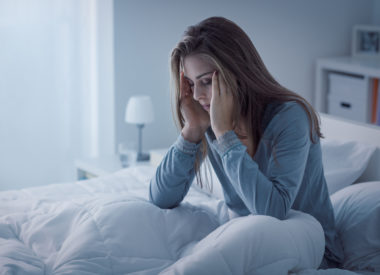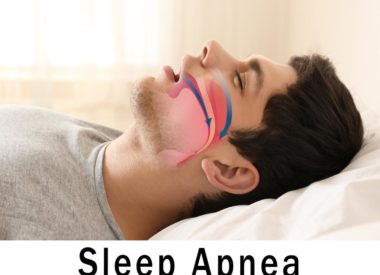What is Narcolepsy? (Signs, Symptoms, and Diagnosis)
Prior to Flygare’s emergence as an advocate for narcolepsy research and awareness, Americans had no real spokesperson to put a humanizing face on this perplexing neurological disorder, except perhaps the classic cartoon character, Mr. Magoo, well known for falling asleep at odd times during the day.
Flygare has since shown that narcolepsy is not the amusing condition people may have guessed it to be, but a real and disabling condition that has no cure and few therapies to provide relief and support to its sufferers.
What is narcolepsy?
Narcolepsy is a sleep disorder categorized as a “central disorder of hypersomnia.” Central disorders have neurological origins, and the term hypersomnia suggests a state of perpetual sleepiness.
For narcoleptics, this is not the kind of sleepiness that most of us fix with a cup of coffee in the morning.
People with narcolepsy have a chronic problem with controlling their sleep-wake cycles. They may experience sudden, irresistible urges to sleep referred to informally by some as “sleep attacks”with no plausible explanation (such as a medical condition or poor sleep habits).
Narcoleptics can sleep an entire night, then wake up feeling sleepy, and that feeling never quite goes away.
Narcolepsy Types
There are two versions of this sleep disorder:
Type I Narcolepsy (narcolepsy with cataplexy):In this version, the person with narcolepsy experiences a sudden collapse known as an episode of cataplexy. It is perhaps narcolepsy’s most distinctive feature. About 70 percent of all cases of narcolepsy are Type I.
Type II Narcolepsy (narcolepsy without cataplexy):There is a subset of people who suffer from narcolepsy but who do not experience episodes of cataplexy. Just under a third of all narcoleptics fall into this category.
What are the signs of narcolepsy?
Cataplexy
Cataplexy is perhaps the biggest clue that someone has narcolepsy. Cataplexy refers to a sudden collapse during a period of wakefulness that leaves the person indisposed for a brief period of time in what appears to be a spell of fainting.
Cataplexy is actually the presentation of a sudden loss of muscle tone in the body. When it strikes, a narcoleptic’s knees will buckle, their chin will drop, and their head will fall forward quite suddenly.
An episode is usually triggered by an emotional experience:fear, laughter, or anger. The person suffering through cataplexy is usually conscious, but temporarily unable to voluntarily regain muscle control.
Itcan take anywhere from 30 seconds to 2 minutes for them to recover, though severe narcoleptics may take even longer.
These moments of collapse are related to the deficiency of a specific neurotransmitter in the brain called orexin(orhypocretin). This neurochemical is necessary to maintain wakefulness, and imbalances lead to these unusual episodes.
Inexplicable sleepiness
People with narcolepsy don’t always experience cataplexy, however. But they all do tend to be younger and experience sleepiness for much of the day. This makes it hard to identify and diagnose the condition, as teenagers and young adults often have unusual sleep patterns and may also practice poor sleep hygiene, leading to similar patterns of ongoing daytime sleepiness.
Other signs a person might be suspected of having narcolepsy include:
-
Evidence of automatic behavior, in which they may briefly fall asleep but continue with physical tasks, uninterrupted.
-
Cognitive “fog,”in which they never feel alert or clear headed during the day
-
Episodes of sleep talking, vivid dreams, and unusual movement during sleep
-
Sudden weight gain, likely due to problems with sleep fragmentation at night
Symptoms of narcolepsy gradually develop over a period of months, and the disorder is managed with medication. A diagnosis of narcolepsy is a diagnosis for life, as there is no cure and only a limited understanding of the condition among scientists.
Narcolepsy symptoms: The Tetrad
What researchers do understand is that four specific symptoms are hallmarks of this sleep disorder. These symptoms belong to what is known as the Narcolepsy Tetrad.
- As highlighted here already, most people with narcolepsy experience extreme, chronic problems with daytime sleepiness. The need to sleep is so great that it negatively impacts ordinary life. They sleep in bursts of a few seconds to a few minutes, unlike the normal napping behaviors of other sleepy people.
- Roughly two thirds of narcoleptics experience cataplexy.
- Narcoleptics also suffer from hallucinations(visual and/or auditory) at the beginning and end of their sleep cycles. Typical experiences with hallucinations include deep feelings of dread or the sense that one is being attacked.
- As if the hallucinations are not bad enough, narcoleptics can experience sleep paralysis. These periods of immobility also occur near the beginning or end of sleep and can be devastating if accompanied by terrifying hallucinations. In these periods, which can last up to 15 minutes, narcoleptics are conscious and yet not awake enough to trust that they can differentiate reality from the dream state.
Anywhere from 10 to 25 percent of all cases of narcolepsy show presentations of all of these symptoms, making hallucinations and sleep paralysis quite a bit more rare.
A narcolepsy diagnosis
Identifying and diagnosing narcolepsy may require numerous tests, mostly to rule out other conditions which have similar symptoms.
The tests
-
Physical exam, to rule out medical problems
-
Blood panels, for the same reason
-
EEG tests, to identify hidden neurological problems
-
Overnight polysomnogram, to get an accurate comprehensive portrait of sleep patterns and to rule out other preexisting undiagnosed sleep disorders
-
Multiple Sleep Latency Test (MSLT), otherwise known as a daytime nap test, to measure how long it takes to fall asleep during the day
-
Genetic screening toidentify the so-called “narcolepsygene” known asDQB1*0602
Anyone who has experienced any of these symptoms should address them with the help of their primary care physician, who can refer them to a board-certified sleep specialist, who will run all the tests necessary toidentify the proper diagnosis and treatment for this unusual, disabling sleep disorder.



